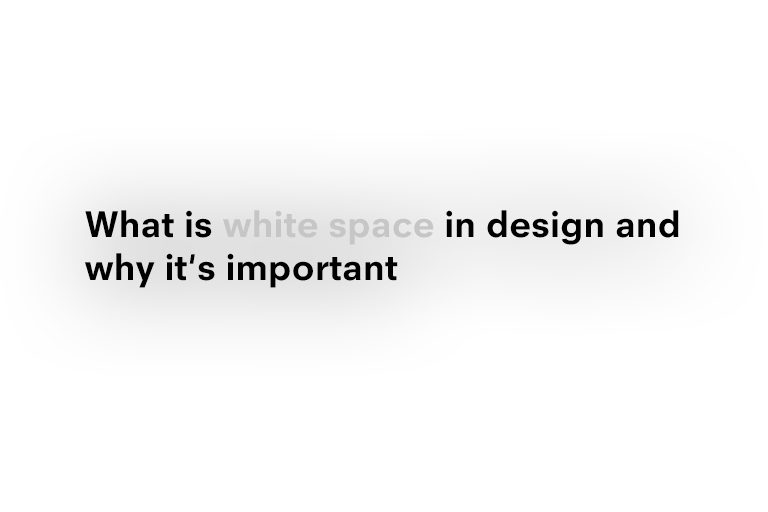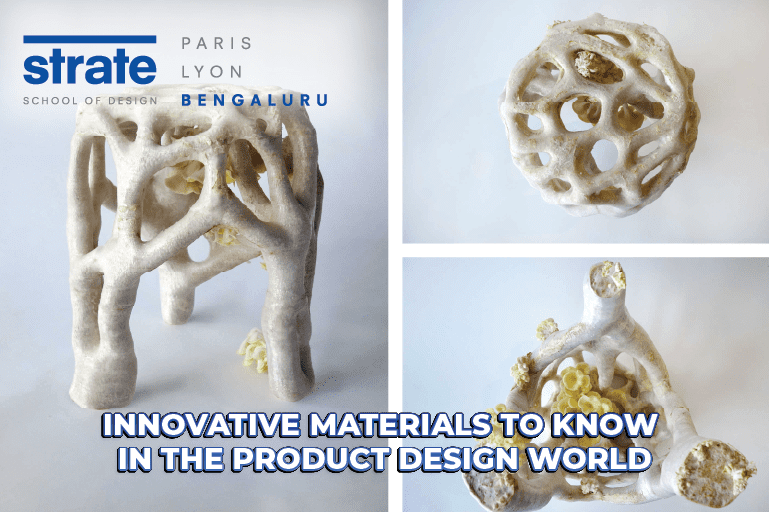White space is known as the negative space or empty space that allows a design visual to breathe and allow a consumer or user to focus on the required elements. It is the blank or empty space around functional elements of a page or a design visual. While it’s known as a white space, the concept of negative space or white space it that it can be of any colour, texture, pattern or a background image.
Why white space?
It is part of design to create a visual hierarchy, a sense of balance in composition and offer emphasis to and over certain elements of design like – typography, graphics, images. The power of white space is that without its presence, a user will not have a natural flow to navigate through the content.
Also read: Product design: Crafting intricate design for wearable technology
Active white space: This is when the white space is a conscious effort to offer a structure and flow to the end consumer. This is when a designer intentionally draws users attention to the content (text, type or images) and has a direct influence on the content readability. This white space allows users to read/ comprehend the context at a certain pace and comfort.
Passive white space is when the natural empty/ blank space occurs between words or a logo design or graphic elements of visual design, a page, website, or the packaging design. Passive white space is used to improve the aesthetics of a design layout without aiming to guide the user through a flow or content order. An example is when the white space is used between paragraphs.
Use case analysis
Brands that have actively worked on building white space in their product ads, packaging, visual communication and other graphic aids with a splendid success are:
A. Apple’s minimalist product packaging design
A minimalist white box with shimmering metallic fonts – the white space is by design to engage the user with the packaging first and leading to the product.
Apple is known to ignite the sensory experience with their packaging design in their consumers building up a sense of excitement – making the packaging just as crucial as the product it contains. Their packaging is clean, elegant, and sophisticated.
In a world of over-stimulation – Apple’s iconic product packaging design offers a unique sensory experience that leads to an easy unboxing and identification of components, parts and their use. The less is more concept with catching the customers eye is unmissable with their packaging design that makes the most of white space.
Also read: Nike’s design innovation strategy
B. Visual Identity design:
i. Coca-Cola logo offering a sense of movement with its white space
The white space between letters in the logo design for Coca-Cola is intentionally built to offer the viewers a sense of movement and dynamism in its design. This change was brought in first in 1969 when Coca-Cola introduced their iconic white wave design that they coined as the Dynamic Ribbon Device. While the logo went through a few changes before being finalized in 2007, the brand went back to the 1969 design and added a subtle white space between the alphabets to offer the viewers a guided sense of wave/ movement paying emphasis on the font and type.
ii. FedEx’s hidden arrow
Have you noticed the hidden arrow in the FedEx logo?
One of the cleverest logo designs you are to view is one of FedEx. An ingenious way to make use of negative space between two letters has won the design expert Stephen Bayley many awards. What came out in the critique of the design became one of the most iconic brand logos we have. The tightly spaced letters ‘E’ and ‘x’ formed an arrow and subtly led the designer to suggest a message of getting from point A to point B – with speed and precision. Offering the brand an impeccable visual identity.
Also read: Strate x Tata Motors partnership
C. Architectural design using white space/ negative space
i. Louvre Museum in Paris has a Pyramid-shaped
structure entrance – a fine example of how to use negative space in architectural design to captivate your audience in a realm of grandeur and elegance. Built to manage the daily foot count and as a focused entry point to the museum, this pyramid design with extravagant space evokes feelings of glory and grandiosity to the visitors.
ii. Beijing National Stadium
has earned the nickname of ‘Bird’s Nest’ for its intricate design of the roof that reflects a web of twisted steel sections. The circular design is known to represent heaven, but the twisted roof design is inspired by the Chinese style crazed pottery. The twisted steel uses negative space to offer the viewers in the stadium a sense of openness with natural air and light seeping through.
In each of the above examples, white space offers users a different perspective, experience and take away.
- For Coca-Cola design, the white space helps the viewer with a flow, a movement in its readability,
- In Apple’s example, it offers users a minimalistic approach of taking in the product experience while making their interface look more spacious.
- In the luxury sector, Chanel acts as an ideal example on how they use white space for all elements – web, packaging, printed articles and editorials/photoshoots. The iconic luxury fashion house uses this white space to reinforce the brand’s image of elegance, bespoke exclusivity, and unmatched classic appeal.
Importance of white space and its practical usage for designer should consider the following:
Enhance reading and comprehension of design: To make sense
White space helps to separate the various elements in design and aids the designer to identify what are the visiting areas for the viewers in the design. Lack of white space would make it almost impossible to read, comprehend and segregate the various design elements from one another making it hard for the design to be interpreted. To help any design make sense – white space is a crucial element.
Bring user attention to particular elements
The purpose of white space is to guide the user and bring their focus on a particular object, image, text or element on the website, page or product packaging. Offer a comfortable flow of movement that aids the user in easy navigation ( eye movement and comprehension) through the design. This is especially useful in web design and product ad campaigns where call-to-action buttons act as the functional element and for the viewer to come to it naturally.
Also read: Multi-sensory typography: Engaging different sense with words
Build connections between the various elements
In a design you need white space to help people make the connection between the elements. As an example, when it comes to web form design – the designer should create the labels closer to the relevant boxes and fields to build one single unit.
Effective and attractive design need negative space
Introduction of white space in a design brings in simplicity and improves the visual quality of the design simply by offering each element its own breathing space – making it more impactful, effective and attractive.
It helps to reduce clutter and improve the visual quality of the content, stimulate emotions of your audience by simply focusing on the message it is designed to impart.
Other factors that are both important and should be considered are how it helps in readability – making content legible, gives users a break from over stimulation, creating a visual hierarchy of content aiding users to be able to scan through as easily and still grasp the information intended and offer a sense of elegance amongst others.
Also interesting to read: Humanity Centric design and why it matters
White space is not wasted space, it is in fact a powerful tool of design and each designer’s toolbox must have this as an integral part – one that glues the entire design. What differentiates a good design from a great design is often the white space and how a designer utilized it to make the most impact.






Want to Become a Designer ?
Strate is a unique design school that nurtures your talents as a designer by offering state-of-the art designing courses in Bangalore.
Join Strate